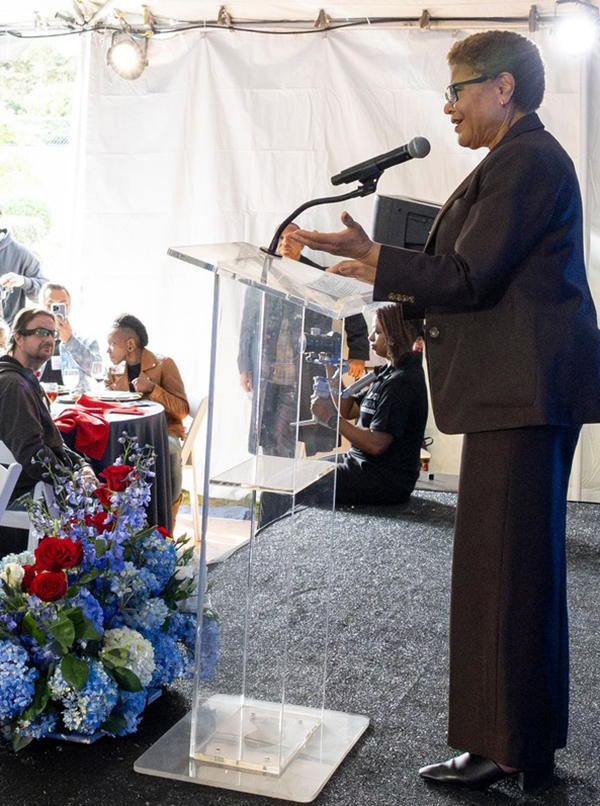
LOS ANGELES — The number of people experiencing homelessness counted across the Los Angeles County Metropolitan Transportation Authority’s bus and rail system dropped by nearly 40% from last year, according to the transit agency’s annual survey released Thursday.
Between 631 and 684 people experiencing homelessness were counted in February, Metro reported. The count represents a decrease from last year’s tally of 1,041 to 1,092 unhoused individuals found on Metro property, including stations, rights-of-way and parking lots. The survey used methodology developed by the University of Southern California.
Metro officials attributed the reduction to expanded outreach efforts and partnerships with Los Angeles County health services. The agency’s HOME program deploys teams across the transit system to connect unhoused riders with housing and support services.
“Fewer people are using the Metro system as shelter, and more are being connected to housing and services,” said Metro C.E.O. Stephanie Wiggins.
The transit system continues to serve as temporary shelter for hundreds of unhoused Angelenos, even as broader homelessness numbers declined modestly across the region. Countywide homelessness decreased 4%, while the City of Los Angeles saw a 3.4% reduction, according to the Greater Los Angeles Homeless Count.
Metro works with six community organizations including PATH, Christ Centered Ministries and L.A. Family Housing to provide services to unhoused individuals found on transit property. The agency reported connecting 2,709 people to interim or permanent housing during fiscal year 2025.
County partnership provides Metro with access to shelter beds around the clock, allowing outreach workers to offer housing options during late-night hours when buses and trains go out of service.
“More than 72,000 individuals remain unhoused, and many seek refuge on and around our transit system,” said Los Angeles County Supervisor Kathryn Barger, who also serves on Metro’s board.
The February count focused specifically on Metro facilities and was separate from the broader regional homeless survey conducted by the Los Angeles Homeless Services Authority. Metro’s results were not included in L.A.H.S.A.’s published regional totals.
For many riders, particularly in communities of color where transit use is highest, the presence of unhoused individuals on buses and trains reflects broader housing and economic challenges affecting Los Angeles neighborhoods.
The transit system carries nearly 1 million daily boardings across 2,200 buses and six rail lines, serving as a critical transportation lifeline for working families throughout Los Angeles County.
Metro Board Chair Fernando Dutra acknowledged ongoing challenges, saying “there is still much more work to do” while emphasizing efforts to make transit “safer, cleaner, and more welcoming.”





